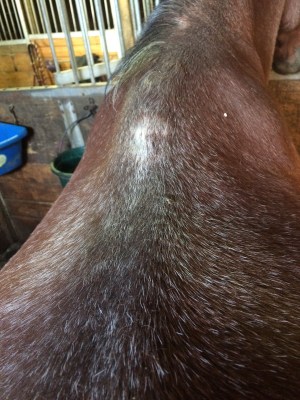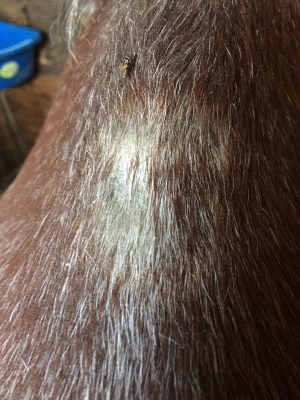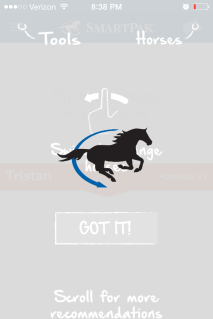For those new, when Tristan was diagnosed with Cushings, one of his most obvious outward symptoms was that he went from a horse could live outside, naked, 24/7 in Vermont to a horse who needed a full set of blankets starting at 40 degrees. Most Cushings horses have trouble in summer and get overheated. Tristan wanted to buck the trend.
That first winter, I put out the call and between the barn and friends, I was blown away by generosity. I got a stable blanket from a friend’s beloved horse who had recently passed. A medium weight from another friend whose daughter’s horse had recently retired south, delivered to me via meetup at a highway rest stop on a trip to Montreal. The barn did an extraordinary job of monitoring him closely and working out the nitty-gritty of when he needed what blankets. Eventually, I came around to the idea of owning a horse who needed blanketing.
It’s been three years since that diagnosis and that first winter of blanketing, and I’ve learned a lot about what he actually needs and what fits him. This year, he got some new-to-him blankets. Luckily, one of the things I discovered in those two years is that Tris is actually pretty easy on blankets! He rolls hard in them, but he doesn’t play much in pasture (anymore).
Through trial and error, I discovered that Smartpak’s regular line of blankets fit him pretty darn well at a 72. I took advantage of two different sales to buy him an unlined turnout sheet and a medium weight stable blanket.
True confession time: he probably could have gotten through ok with most of what he had – he definitively needed a new turnout sheet, but the others could have continued hodgepodge – but I got some extra money from a side job, and I wanted him to match. Yeah. I’m not really proud to admit it, but that was part of my motivation. He clashes with most colors, so our colors have always been black and silver. Those Smartpak blankets come in black with gray trim. And they fit him great. And I wanted them. Adulthood mostly sucks, but if it means I get to buy new things for my horse just because I wanted them, then I will. SO THERE.

new turnout sheet

new turnout sheet in action

new stable blanket fitting session, just out of the box (to right)
The final new-ish piece is that he also wears a quarter sheet to warm up and cool down. Not all the time – but when it 30 or below, it really does make a difference. I spent a long time borrowing the barn ones, and then I made my own and I love it. I’m trying to work out a system to make these for the shop, but they’re awfully labor-intensive and my time is short around the holidays.

so handsome ❤ ❤ ❤
This combination of stable blanket + turnout sheet has been working quite well so far this winter, and it’s been well below zero a couple of times. The best barn staff checked on him and he was cozy and comfortable even when it got super cold. So I’m pleased with the system as it is.
He still has another medium-weight that’s a bit big on him that will serve admirably as another layer in the event that it gets even colder (always a possibility, thanks Vermont!). But I think we’ve got a good winter plan in place.



















